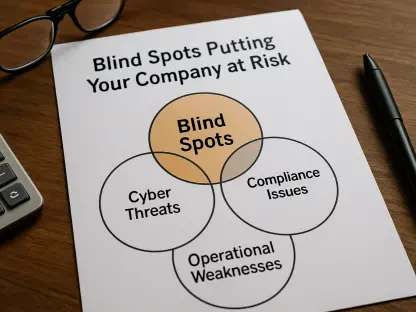The intersection of artificial intelligence (AI) and cybersecurity is rapidly evolving, with AI tools being utilized by both defenders and cybercriminals. As we look ahead to 2025, understanding the implications of AI on cybersecurity becomes crucial for organizations, security professionals, and the general public. The technological advancements in AI are creating a dual-edged sword that enhances security measures for organizations while also presenting new, sophisticated avenues for cybercriminals to exploit. As AI’s capabilities expand, so does its influence on the future of cybersecurity.
The Impact of AI on Cybersecurity
AI has significantly intensified the cybersecurity arms race, providing transformative capabilities to both defenders and attackers. Over the past year, the integration of AI tools into cybersecurity strategies has led to notable advancements for defenders, enhancing their ability to detect and respond to threats. However, malicious actors have also been quick to exploit these technologies, leveraging AI to increase the scale, sophistication, and severity of their attacks. This dual-edged nature of AI raises substantial concerns and highlights the necessity for constant vigilance and advancement in cybersecurity measures.
AI-Driven Threats
The increasing deployment of AI by cybercriminals is set to elevate the threat landscape significantly in 2025. The UK’s National Cyber Security Centre (NCSC) has already flagged that AI’s utilization by threat actors will almost certainly escalate the volume and impact of cyberattacks within the next two years. This alarming trend indicates that the very tools developed to protect systems can be repurposed by adversaries to engineer more devastating attacks. In particular, the use of generative AI (GenAI) in social engineering campaigns will enable the creation of highly convincing scams crafted in faultless local languages, making it increasingly difficult for individuals and organizations to discern between real and fraudulent communications.
Additionally, AI’s capability in automating reconnaissance tasks will facilitate the identification of vulnerable assets on a large scale, presenting new challenges for cybersecurity. The ease with which AI can scan and analyze vast amounts of data means that threat actors can swiftly locate and exploit weaknesses, bypassing traditional security measures. Specific AI-driven threats expected to rise in 2025 include deepfake technology aiding fraudsters in circumventing selfie and video-based identity checks for new account creation and access. AI will refine social engineering tactics to deceive corporate recipients into conducting unauthorized fund transfers, with deepfake audio and video further enhancing the credibility of these fraudulent impersonations.
AI Privacy Concerns
As AI becomes integral to various applications, privacy risks deepen, raising significant concerns as we move towards 2025. Large language models (LLMs) require enormous datasets comprising text, images, and videos for training, which may inadvertently include sensitive information such as biometrics, healthcare records, and financial data. These extensive data requirements often lead to the inclusion of personal information, whether intentionally or accidentally, increasing the potential for misuse and data breaches. Changes in terms and conditions by social media and other companies to use customer data for training models can further exacerbate privacy vulnerabilities, making it essential for consumers and organizations to be vigilant about how their data is utilized.
Once integrated into AI models, this data poses significant risks if the AI system is compromised. Furthermore, another concern is corporate data leaking through employees’ GenAI prompts, potentially exposing sensitive information and leading to severe financial and reputational damage. Polls indicate that a notable percentage of companies have already experienced such data breaches, demonstrating the need for stringent data protection measures and comprehensive privacy safeguards. The convergence of AI and cybersecurity demands a delicate balance between leveraging AI’s capabilities and protecting individual privacy, underscoring the importance of robust regulatory frameworks and ethical AI practices.
AI as a Defensive Tool
The indispensable role AI will continue to play in defending against cyber threats in 2025 cannot be overstated. AI-powered cybersecurity solutions will help enhance security measures, generate synthetic data to train users, security teams, and AI security tools effectively. This synthetic data can mimic real-world scenarios, providing a robust training ground for identifying and mitigating threats. Utilizing AI to generate synthetic data for training can significantly improve the preparedness of security teams, enabling them to respond more efficiently to sophisticated attacks.
Enhancing Security Measures
AI will summarize threat intelligence, facilitating faster decision-making by condensing extensive threat reports for analysts. This capability will be crucial in enabling security teams to stay ahead of emerging threats, as they can shift their focus from data analysis to proactive threat mitigation. Furthermore, AI will play a pivotal role in enhancing SecOps productivity by contextualizing and prioritizing alerts for overburdened teams while automating workflows related to investigation and remediation. This will allow security professionals to concentrate on more complex tasks, improving overall efficiency and ensuring a more robust security posture.
Understanding suspicious behavior is another domain where AI will make significant strides, as it enables the scanning of large datasets for signs of malicious activities. AI-driven tools can detect anomalies and potential threats that might otherwise go unnoticed, thus acting as an additional layer of security. This proactive approach not only enhances the capability of security teams but also ensures faster response times in mitigating attacks.
Boosting SecOps Productivity
AI will contextualize and prioritize alerts for security operations (SecOps) teams, alleviating the burden of dealing with numerous security alerts daily. By leveraging AI to filter and categorize alerts based on their severity and context, security professionals can direct their attention to the most pressing threats, thereby enhancing productivity. This automated prioritization is essential in managing time and resources effectively, especially as cyber threats become increasingly sophisticated and numerous.
Moreover, AI will streamline workflows related to investigation and remediation, offering significant time savings for SecOps teams. Automating investigative tasks allows for thorough examination of potential threats while freeing up human resources to focus on strategic defense planning and threat mitigation. Identifying suspicious behavior and scanning massive datasets further enhances AI’s role in cybersecurity. This capability means even subtle indicators of malicious activities are captured, ensuring that potential threats are promptly addressed and neutralized, reinforcing the overall security infrastructure.
Balancing AI and Human Expertise
Despite the advancements, the critical need for balancing AI and human expertise remains. AI is not infallible and can suffer from issues such as hallucinations and model degradation, making human oversight essential in mitigating these risks and ensuring effective decision-making. Cybersecurity will require a sophisticated blend of AI capabilities and human intuition to address the evolving threat landscape adequately. The combination of AI’s analytical power and human judgment is necessary to navigate the complexity of modern cyber threats, ensuring more resilient and adaptive security strategies.
Human Oversight and Decision-Making
Human oversight will be crucial in mitigating the risks associated with AI, such as hallucinations and model degradation. Security professionals will need to continuously monitor AI systems to ensure they are functioning correctly and making accurate decisions. Relying solely on AI without human intervention could lead to catastrophic errors, such as misidentifying benign activity as a threat, or worse, overlooking genuine threats. This oversight also involves updating AI models to reflect the latest threat intelligence. By integrating human expertise with AI capabilities, organizations can create a dynamic cybersecurity environment that adapts to new attack vectors and the ever-changing threat landscape.
Training and Collaboration
Training and collaboration will be key in balancing AI and human expertise. Security teams will need to be well-versed in AI technologies and understand how to leverage them effectively while also being aware of their limitations. Training programs should focus on developing skills in both AI operation and traditional cybersecurity practices. Encouraging collaboration between AI developers and cybersecurity professionals will be essential in creating robust and resilient security solutions, ensuring both groups can share insights and improve the effectiveness of AI-driven security measures.
Regulatory Landscape and Compliance Challenges
The development of AI and cybersecurity does not occur in isolation but is influenced by geopolitical and regulatory changes. In the United States, potential deregulation in technology and social media sectors could empower malicious actors, complicating efforts to combat AI-generated threats. Deregulation might remove critical safeguards, giving cybercriminals more latitude to exploit emerging technologies for nefarious purposes. On the other hand, stringent regulations can help create a secure and fair digital environment by setting standards for AI use and data protection.
In the European Union, unresolved aspects of AI regulation add complexity to compliance efforts. With the General Data Protection Regulation (GDPR) already setting high standards for data protection, new AI regulations will impose further requirements that organizations must navigate diligently. Companies will need to stay informed and adaptable to align with evolving regulatory frameworks, ensuring their AI systems comply with domestic and international laws, and addressing potential compliance challenges proactively. Moreover, lobbying from the tech industry could shape how new regulations are ultimately enforced, impacting the broader adoption and governance of AI technologies.
Conclusion
The convergence of artificial intelligence (AI) and cybersecurity is progressing swiftly, with AI tools now being utilized by both defenders and cybercriminals alike. As we look toward 2025, grasping the implications of AI on cybersecurity becomes vital for organizations, security experts, and the general public. Technological advancements in AI are producing a double-edged sword. On one hand, AI enhances security measures for organizations, helping to protect sensitive data and systems more effectively. On the other hand, it offers new, sophisticated methods for cybercriminals to exploit vulnerabilities. With AI’s capabilities continuing to expand, its impact on the future of cybersecurity also grows. Thus, the balance between leveraging AI for defense and mitigating its misuse is becoming ever more critical. It is essential for all stakeholders to stay informed and prepared for the challenges and opportunities AI introduces into the cybersecurity landscape. This dual role of AI highlights the importance of continued vigilance and innovation to safeguard against emerging threats.









